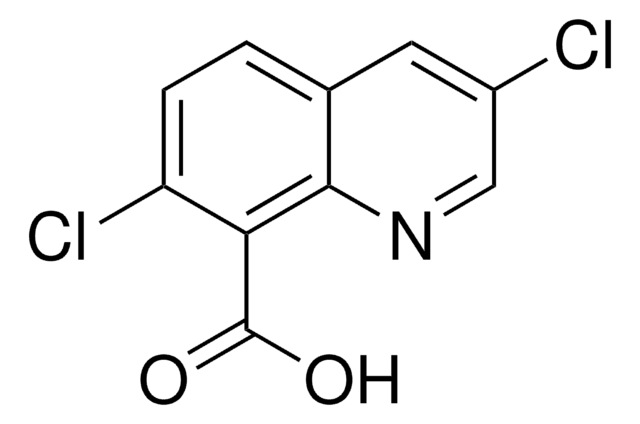추천 제품
Grade
analytical standard
Quality Level
제품 라인
PESTANAL®
유통기한
limited shelf life, expiry date on the label
기술
HPLC: suitable
gas chromatography (GC): suitable
응용 분야
agriculture
environmental
형식
neat
SMILES string
CS(=O)(=O)c1ccc(c(Cl)c1)C(=O)C2C(=O)CCCC2=O
InChI
1S/C14H13ClO5S/c1-21(19,20)8-5-6-9(10(15)7-8)14(18)13-11(16)3-2-4-12(13)17/h5-7,13H,2-4H2,1H3
InChI key
PQTBTIFWAXVEPB-UHFFFAOYSA-N
유사한 제품을 찾으십니까? 방문 제품 비교 안내
일반 설명
Sulcotrione is a herbicide belonging to the triketone class, commonly used in corn production.
애플리케이션
Refer to the product′s Certificate of Analysis for more information on a suitable instrument technique. Contact Technical Service for further support.
Sulcotrione may be used as an analytical reference standard for the quantification of the analyte in environmental samples using liquid chromatography coupled to tandem mass spectrometry.
추천 제품
Find a digital Reference Material for this product available on our online platform ChemisTwin® for NMR. You can use this digital equivalent on ChemisTwin® for your sample identity confirmation and compound quantification (with digital external standard). An NMR spectrum of this substance can be viewed and an online comparison against your sample can be performed with a few mouseclicks. Learn more here and start your free trial.
법적 정보
PESTANAL is a registered trademark of Merck KGaA, Darmstadt, Germany
적합한 제품을 찾을 수 없으신가요?
당사의 제품 선택기 도구.을(를) 시도해 보세요.
신호어
Warning
유해 및 위험 성명서
Hazard Classifications
Aquatic Acute 1 - Aquatic Chronic 1 - Repr. 2 - Skin Sens. 1A - STOT RE 2
Storage Class Code
11 - Combustible Solids
WGK
WGK 2
Flash Point (°F)
Not applicable
Flash Point (°C)
Not applicable
개인 보호 장비
dust mask type N95 (US), Eyeshields, Faceshields, Gloves
가장 최신 버전 중 하나를 선택하세요:
Sulcotrione soil metabolism in summer corn crops.
J Rouchaud et al.
Bulletin of environmental contamination and toxicology, 61(5), 669-676 (1998-12-05)
Hanene Chaabane et al.
Journal of agricultural and food chemistry, 53(10), 4091-4095 (2005-05-12)
The retention process of sulcotrione and its two hydrolysis products, 1,3-cyclohexanedione (CHD) and 2-chloro-4-methylsulfonylbenzoic acid (CMBA), were studied in four different soils (Belgium, Landes, Perpignan, and Martinique) under laboratory conditions. Adsorption isotherms were well fitted by a Freundlich relationship. The
Soil dissipation of the post-emergence herbicide sulcotrione in maize crops treated with organic fertilizers.
J Rouchaud et al.
Bulletin of environmental contamination and toxicology, 57(3), 398-405 (1996-09-01)
Alexandra Ter Halle et al.
Environmental science & technology, 40(9), 2989-2995 (2006-05-25)
Vegetation plays a key role in environmental cycling and the fate of many organic pollutants. This is especially the case for pesticides because plant leaves are their first reaction environment after application. It is commonly accepted that photochemical reactions of
Christophe Calvayrac et al.
Pest management science, 68(3), 340-347 (2011-09-16)
The dissipation kinetics of the herbicide sulcotrione sprayed 4 times on a French soil was studied using a laboratory microcosm approach. An advanced cultivation-based method was then used to isolate the bacteria responsible for biotransformation of sulcotrione. Chromatographic methods were
자사의 과학자팀은 생명 과학, 재료 과학, 화학 합성, 크로마토그래피, 분석 및 기타 많은 영역을 포함한 모든 과학 분야에 경험이 있습니다..
고객지원팀으로 연락바랍니다.










